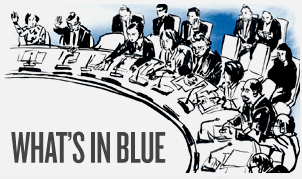Children and Armed Conflict: Open Debate and Resolution
On Monday (9 July), the Council will hold a high-level open debate on children and armed conflict with the theme, “Protecting Children Today Prevents Conflict Tomorrow”. The meeting will be chaired by Swedish Prime Minister Stefan Löfven. Special Representative for Children and Armed Conflict Virginia Gamba will present the Secretary-General’s annual report on children and armed conflict. Other speakers include the executive director of UNICEF, Henrietta Fore, and Yenny Londoño, a civil society representative from Colombia. The Council is expected to adopt a resolution during the meeting.
Open Debate
Sweden, the chair of the Working Group on Children and Armed Conflict, circulated a concept note on 21 June, which highlights three key areas: protecting children and upholding their rights; successful reintegration of former child soldiers; and peace processes as an entry point for protecting children. The concept note suggests that members address areas such as how to strengthen the links between child protection, the rights of the child, and conflict prevention; integrating the protection and rights of children in peace processes; empowering young people to become actors for peace; and supporting governments and regional and sub-regional organisations in developing child protection capacities. Keeping these themes in mind, members may present their views on how the children and armed conflict agenda can be better integrated in the wider conflict prevention and sustaining peace agenda.
Gamba, in presenting the report, is likely to express concern over the significant increase in verified grave violations against children in 2017. There were at least 21,000 grave violations of children’s rights verified by the UN last year (6,000 by government forces and 15,000 by non-state armed groups), a 27 percent increase over 2016. Increasing violations are largely attributed to the changing nature of conflict and the deterioration in a number of situations. Among the trends that Gamba may highlight are the denial of humanitarian access as a weapon of war and increased attacks on schools and hospitals. On a more positive note, 10,000 children were formally released by armed groups, and 12,000 children were reintegrated. Gamba is likely to stress the importance of long-term and sustainable reintegration programmes and the need to address funding gaps. She may also highlight the use of deprivation of liberty for children allegedly associated with armed forces and groups, and reiterate that these children should be treated as victims. Other issues from the Secretary-General’s report that may be covered by Gamba include the importance of the regional and sub-regional organisations, especially in light of cross-border recruitment.
For the second year running, the annexes listing parties that have committed violations against children have been divided into an “A” section, listing parties that have not put in place measures during the reporting period to improve the protection of children, and a “B” section, listing parties that have put in place some such measures. There were new listings of non-state armed groups in the DRC, Mali and Yemen. Parties that had been listed previously and now have additional violations include the Myanmar security forces; Al-Shabaab in Somalia; and the Sudan People’s Liberation Army (SPLA) in South Sudan. Two parties were delisted: the FARC-EP in Colombia and the Sudan government security forces, which had both been listed for recruitment and use of children. The Saudi-led coalition in Yemen has been delisted for attacks against schools and hospitals, and remains on the annex for killing and maiming in the “B” section. For the last three years, these listings have been particularly controversial, with strong reactions from member states and civil society regarding parties that were omitted or credited with more progress than appeared merited. This year, questions have been raised about whether the Saudi-led coalition should have been delisted for attacks on schools and hospitals: although the numbers have fallen, it is still cited as being responsible for 19 attacks on schools and five attacks on hospitals. During the debate, members may stress the importance of a credible and accurate list of perpetrators in the annexes of the report, and raise concerns about how the decision is made to list or delist parties.
Fore is expected to highlight the increase in violations against children in many situations and talk about UNICEF’s work once children are released and the importance of providing the necessary services to help their reintegration into society. She may also talk about UNICEF’s involvement in the monitoring and reporting mechanism on grave violations against children in situations of armed conflict and in the implementation of action plans.
Londoño, who was forcibly recruited by the FARC-EP when she was 13, is expected to speak about the special needs of children who have been forcibly recruited. She was involved in the peace negotiations between the Colombian government and the FARC-EP and may provide insights on how to better integrate children’s needs in peace processes.
Resolution
Following several weeks of negotiation and two periods of silence, a draft resolution was put in blue on 4 July. The draft resolution provides a framework for mainstreaming protection, rights, well-being and empowerment of children throughout the conflict cycle, as well as in sustaining peace efforts. Sweden had been keen to have a resolution which would build on the approach of last year’s presidential statement, which addressed the connection between conflict prevention and the protection of children. While a more focused resolution was originally considered, ultimately it was decided that a more comprehensive resolution would send a strong signal of the Council’s commitment to the children and armed conflict agenda.
While there was strong support from members to have a resolution, the negotiations were not easy. It seems that new language, including on prevention and sustaining peace, was initially met with some resistance, particularly from China and Russia. These members are not convinced that the Council is the most appropriate place for such discussions. They were also uncomfortable with the use of the more gender-sensitive language in the draft text, preferring to maintain the use of children instead of “girls and boys”. However, after lengthy discussion, much of the language was retained, although some compromises were needed. The draft also provides either new language or greater clarity and direction on a number of issues including treating as victims children who have been separated from armed groups, the integration of child protection provisions in peace processes, engaging the views of children in programming activities, and accountability for all violations against children.
One area in the draft resolution requiring some negotiation was the language on the Paris Principles and Commitments. Negotiations around what would be acceptable language was protracted as France was adamant about including strong language on the Paris Principles and Commitments, while Russia was firmly opposed, despite being a signatory. It seems that Russia’s concerns may stem from a general reluctance to include in resolutions language that appears to endorse non-UN documents. The draft that is in blue takes note of “international and regional initiatives, including the international conference held in Paris in 2007” and the “commitments during the conference”.
Another contentious area was a paragraph on the jurisdiction of the International Criminal Court (ICC). Several Council members are states parties to the ICC (Bolivia, Côte d’Ivoire, France, the Netherlands, Peru, Poland, Sweden and the UK) and were keen to ensue that strong references to the ICC were included. However, it was clear from early on that the US was not willing to accept language that went beyond what it felt was the ICC’s jurisdiction. While not at the forefront of the negotiations on this issue, it seems that China, Ethiopia and Russia were supportive of the US position. When the draft was first put under silence on Monday evening (2 July), the Netherlands broke silence on the ICC language as it wanted a stronger formulation. There were attempts to find alternatives that all sides could agree to but the formulation which included the phrase “matters that are within its jurisdiction”, which was in the original draft and based on language in the resolution adopted on 28 June renewing the mission in Mali was retained in the draft in blue.
There had been some difficulty getting agreement on a paragraph on the role of the Special Representative on Children and Armed Conflict, as a couple of members felt it included language that could be seen as changing her mandate. While the draft in blue modifies some language, particularly in relation to her collaboration with governments and partners, it stresses the important role of the Special Representative, requesting her to engage proactively with member states and calling on her to compile best practices.
Although the negotiations were protracted, it seems that most members are satisfied that the final draft provides a strong endorsement of the children and armed conflict agenda and highlights the key issues. As chair, Sweden appears to have made it a point to listen to the views of all members during the negotiations and to try and accommodate different positions while retaining the key points of the draft resolution. Several elected members, such as Bolivia, Peru and Poland,as well as permanent members France, the UK and the US were strongly supportive of the draft resolution and were instrumental in getting language on several key areas. Russia and China had firm positions in a number of areas, but also showed willingness eventually to compromise and accept some new language

